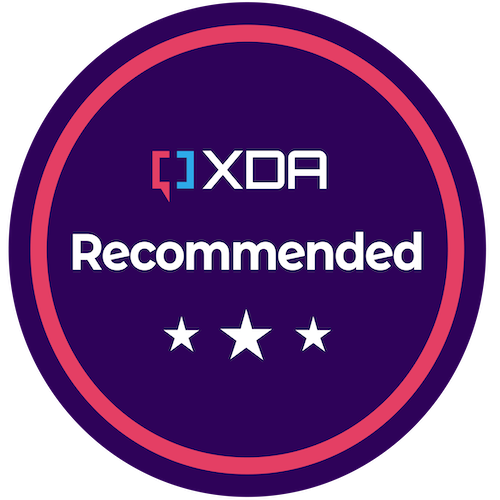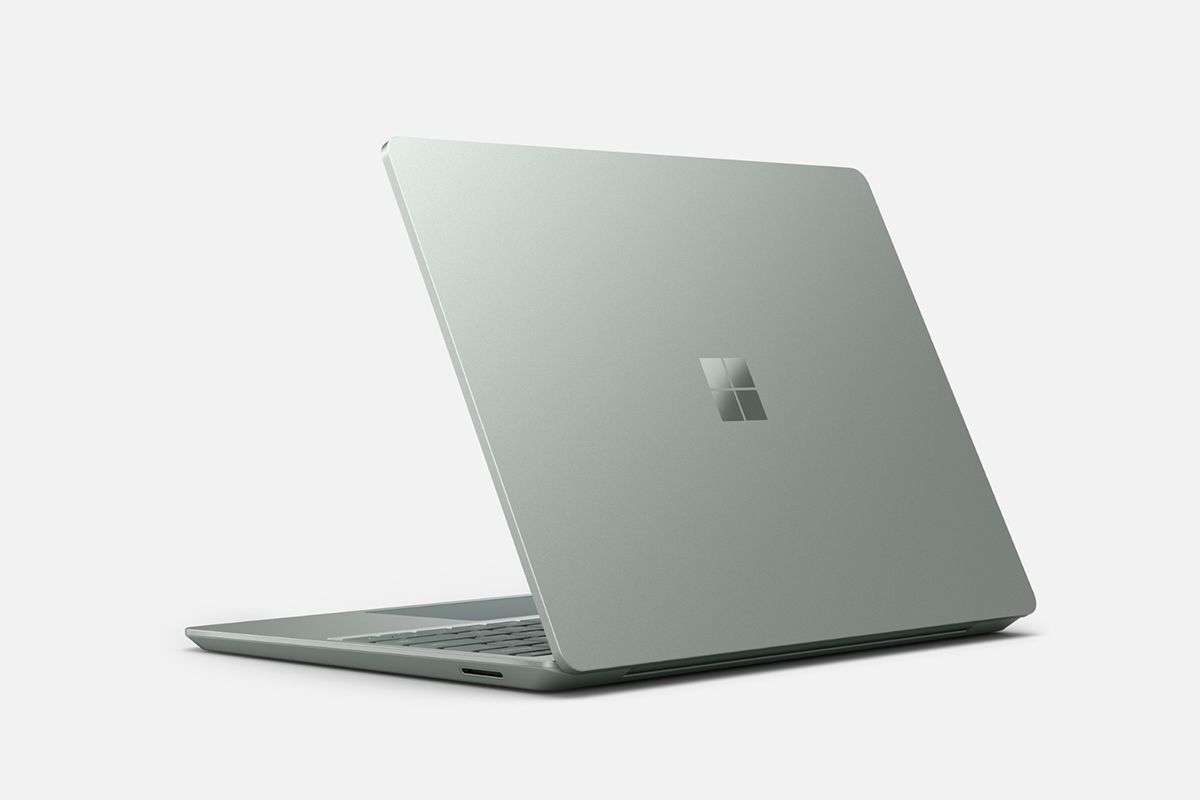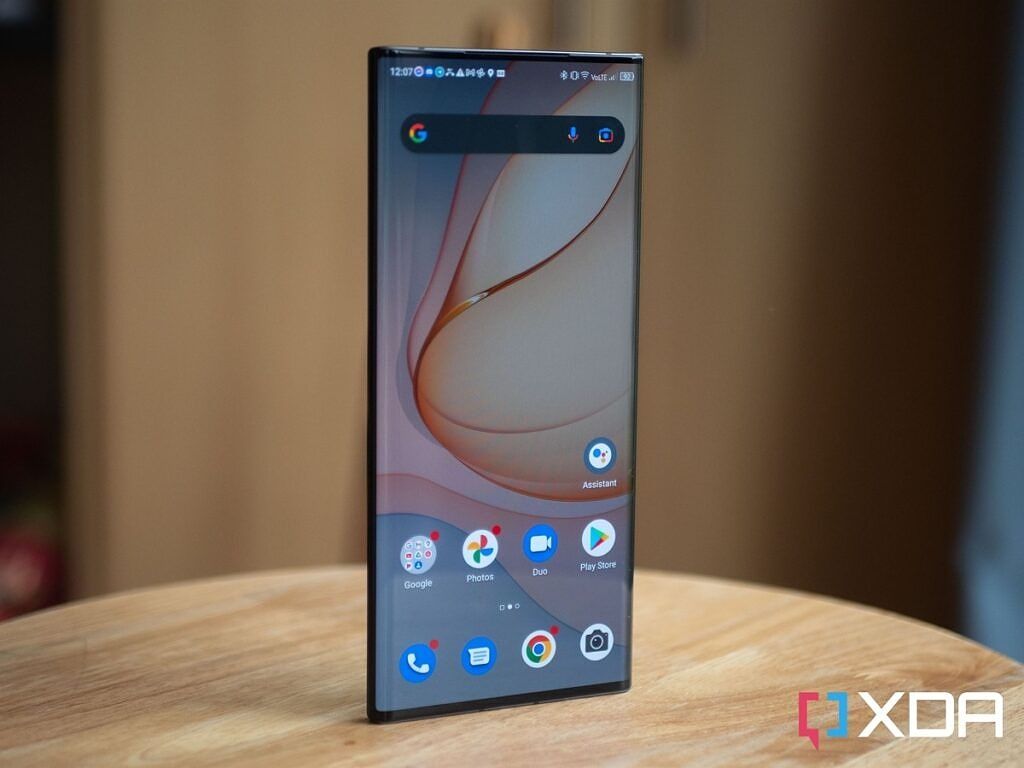
Indeed, the key word that I’d use to describe the Surface Laptop Go 2 is “delightful”. However, it’s still far from perfect, only fixing some of the shortcomings of the first-gen model. The pixel density is still just 148ppi, with the screen resolution falling short of 1080p. It’s also still got the same HD webcam, with some improvements to the ISP and such.
But if you’re looking for something that has a 12.4-inch display, is easy to take on the go, doesn’t break the bank, and looks pretty while doing it, the Surface Laptop Go 2 is a great choice.
- Microsoft's new entry-level laptop is super-light, feels premium, and comes in a pretty new color, Sage. It also packs 11th-gen processors, and more.
|
Features: |
|
|
|
Pros: Cons: |
Navigate this review:
- Surface Laptop Go 2 pricing and availability
- Surface Laptop Go 2: Specs
- Design: It comes in a new Sage color
- Display: The pixel density is still the lowest of any Surface
- Keyboard: One of the best you’ll get at this price point
- Performance: The Surface Laptop Go 2 is upgraded to Intel 11th-gen
- Should you buy the Surface Laptop Go 2?
Surface Laptop Go 2 pricing and availability
- The Surface Laptop Go 2 starts at $599.99, and it’s available now
- It comes in Platinum, Sandstone, Ice Blue, and Sage
Announced at the beginning of June, the Surface Laptop Go 2 was available for pre-orders immediately and began shipping on June 7. You can buy one from the Microsoft Store now, and walk into and Best Buy and grab one.
It comes in four colors: Platinum, Sandstone, Ice Blue, and Sage. Sage is the new color in the lineup, and it’s the new color you’ll see in other Surface devices through 2022.
It starts at $599.99, which is $50 more than its predecessor’s starting point. There’s a reason for that price bump though. The base model no longer comes with 64GB eMMC storage; instead, it has a 128GB SSD, which is a welcome change.
Surface Laptop Go 2: Specs
| Processor | Quad Core 11th Gen Intel Core i5-1135G7 Processor |
|---|---|
| Graphics | Intel Iris Xe |
| Body | 10.95” x 8.12” x 0.62” (278.2mm x 206.2mm x 15.7mm), 2.48 lbs |
| Display |
|
| Memory | 8GB LPDDR4x RAM |
| Storage | Removable drive (SSD): 256GB |
| Ports |
|
| Cameras, video, and audio |
|
| Security |
|
| Connectivity |
|
| Battery |
|
| What’s in the box |
|
| Material |
|
| Color | Sage |
| OS | Windows 11 Home |
| Price | $799.99 |
Design: It comes in a new Sage color
- It’s made out of aluminum with a polycarbonate base for a stylish two-tone design
- Ports include USB Type-A, USB Type-C, Surface Connect, and a headphone jack
Aside from the new Sage color, the Surface Laptop Go 2 chassis is the same as it was on its predecessor. In fact, the new color is an addition to the lineup, rather than replacing something. I was told that this is the new color for 2022, so while Microsoft won’t officially confirm it, you can expect to see other Sage Surface products, like perhaps the next Surface Laptop and Surface Pro Keyboard Covers. Ice Blue, which is available across the board now, actually debuted with the original Surface Laptop Go.
I like Sage a lot. To be honest, while I like Ice Blue, I was disappointed when it debuted because I miss the bold colors of previous years. The original Surface Laptop came in colors like Burgundy and Cobalt Blue (and Graphite Gold, but we don’t talk about that), and those are now long gone in favor of more subtle colors like Ice Blue and Sandstone. Sage is still subtle, but it’s just a bit more bold than Ice Blue.
The Surface Laptop Go 2 is the perfect size and weight for taking on the go.
It also feels premium, which is nice given the $599 starting price point. The lid and palm rest is made out of aluminum, while the base is made out of polycarbonate, something that I personally think we don’t see enough of. It gives it a two-tone look, which is cool. Unfortunately, we really only see the aluminum lid / polycarbonate base combo in mid-tier devices like this, but I’d love to see it more.
As for ports, you get Surface Connect on the right, and on the left, there’s a USB Type-A port, a USB Type-C port, and a 3.5mm audio jack. I never used Surface Connect for charging; obviously, I just used the USB Type-C port. I know Microsoft loves to keep its proprietary charging and docking solution, but at some point, it’s going to have to come to the realization that it’s the only company that uses one.
While this is Microsoft’s entry-level Surface Laptop, it doesn’t feel entry-level. This feels like a premium laptop that’s been designed to be small and light.
Display: The pixel density is still the lowest of any Surface
- The Surface Laptop Go 2 has a 12.4-inch 1536 x 1024 display
- There is no pen support, unlike other members of the Surface Laptop family
- The webcam is still 720p
Still rocking the signature 3:2 aspect ratio that Surface is known for, the 12.4-inch screen on the Surface Laptop Go 2 is 1.1 inches smaller diagonally than the smallest Surface Laptop 4. This is an important distinction, because you really shouldn’t think of the Laptop Go series as just a cheaper Surface Laptop. It’s smaller, and it’s 3:2, the implications of which means that the size lends itself to being taller instead of wider. If you plan to have two apps side-by-side frequently, this probably isn’t the laptop for you.
The 1,536×1,024 resolution means that the screen is less than 1080p, and it also leaves this PC with a 148ppi pixel density, by far its largest shortfall. For comparison, the Surface Laptop 4 and Surface Laptop Studio have 201ppi screens, and the Surface Pro 8 has a 267ppi pixel density. 148ppi is the smallest pixel density of any Surface in history, tied with the Surface RT from a decade ago. In short, you can definitely see pixelation with the display.
For color gamut, it supports 99% sRGB, 70% NTSC, 76% Adobe RGB, and 76% P3, according to my testing. Here’s how it compares to the rest of the lineup.
| Surface PC | sRGB | NTSC | Adobe RGB | P3 |
|---|---|---|---|---|
| Surface Laptop Go 2 | 99% | 70% | 76% | 76% |
| Surface Pro 8 | 100% | 77% | 82% | 83% |
| Surface Go 3 | 100% | 71% | 77% | 78% |
| Surface Laptop Studio | 100% | 80% | 83% | 87% |
Brightness maxed out at 368.3 nits with a 1,000:1 contrast ratio. For comparison, the Surface Go 3 maxed out at 421.3 nits, the Surface Pro 8 maxed out at 445.3 nits, and the Surface Laptop Studio maxed out at 500.2 nits.
It has the worst display of the current Surface lineup.
The Surface Laptop Go 2 has one of the smallest top bezels of any Surface, and it’s also the only one that doesn’t have an IR camera up there. The webcam that is there is 720p still, using the same sensor as before. Microsoft says it’s improved thanks to a new ISP and some other tweaks, but it’s still not the FHD resolution that you’d want.
Keyboard: One of the best you’ll get at this price point
- The keyboard is great, but it’s not backlit
- There’s no fingerprint sensor in the base model
I really like the keyboard on the Surface Laptop Go 2. It feels comfortable, quiet, and accurate, and it even seems like it’s been upgraded over the original model. The plastic key caps match what’s found on the rest of the Surface Laptop family, although there’s one big difference, which is that this keyboard is not backlit.
The touchpad is pretty sizable too, making use of most of the available real estate. Again, the only real drawback here is that there’s no backlight on the keyboard.
In the top-right, there’s a fingerprint sensor, so you’re not lacking biometric authentication. When you press the button to power on the PC, it scans your fingerprint, so it automatically logs you in when the PC boots up. You don’t have to touch the sensor again. Unfortunately, the fingerprint sensor is still not included on the base model.
Performance: The Surface Laptop Go 2 is upgraded to Intel 11th-gen
- The Surface Laptop Go 2 comes with a Core i5-1135G7, up to 8GB RAM, and up to a 256GB SSD
- There is no more eMMC option
Microsoft is staying a generation behind with the Surface Laptop Go 2 processor, so it’s upgrading to Intel 11th-gen. It comes in any SKU you want, as long as it’s a Core i5-1135G7. That’s notable though. With the Surface Go 3 tablet, it comes with a Pentium Gold processor in the base model, and you have to pay extra for a Core i3. No matter which Surface Laptop Go 2 configuration you get, it comes with a Core i5.
It’s also a notable upgrade from the Core i5-1035G1 that was in the original Surface Laptop Go. With Intel’s 10th-gen ‘Ice Lake’ processors, it had three U-series Core i5 SKUs. They had different levels of graphics power. The ‘G7’ model had Iris Plus Graphics, while the ‘G1’ option had the old UHD Graphics. With 11th-gen ‘Tiger Lake’, there’s only one SKU, and it includes Iris Xe graphics, so if you’re coming from a Core i5-1035G1, you’re going from UHD Graphics to Iris Xe, a big difference.
The Surface Laptop Go 2 offers a massive performance boost over its predecessor.
Another big change is that the base model comes with a 128GB SSD. Previously, the base model had 64GB eMMC storage, which is much slower.
For benchmarks, I used PCMark 10, 3DMark, Geekbench, and Cinebench.
| Surface Laptop Go 2 Core i5-1135G7 |
Surface Laptop Go Core i5-1035G1 |
Lenovo ThinkBook 14 Gen 2 Ryzen 5 4500U |
|
|---|---|---|---|
| PCMark 10 | 4,362 | 3,139 | 4,177 |
| 3DMark: Time Spy | 1,193 | 409 | |
| Geekbench | 1,307 / 4,075 | 1,180 / 3,430 | 969 / 3,142 |
| Cinebench | 1,240 / 3,582 | 1,060 / 2,581 | 1,121 / 5,782 |
If nothing else, you should be able to see that there are some really significant performance gains gen-over-gen.
For battery life, it’s about what I’d expect for something of this size. I got around four hours, with a minimum of three hours and 10 minutes, and a maximum of four hours and 30 minutes. It’ll get closer to three hours if you set it to best performance, and close to five hours at recommended power settings.
Microsoft promises 13.5 hours, an increase of the 13 hours promised with the original Surface Laptop Go. This isn’t any less accurate than any other OEM claims; however, it’s the reason that I do my battery testing by doing actual work while not connected to power. There is simply no real-world use case where you’d get 13.5 hours of use out of this.
Should you buy the Surface Laptop Go 2?
While the Surface Laptop Go 2 is delightful, it’s not for everyone.
You should buy a Surface Laptop Go 2 if:
- You’re looking for something stylish to take on the go
- You need a laptop for school
- You’re on a budget
You should not buy a Surface Laptop Go 2 if:
- You frequently use apps side-by-side
- You need more then a Core i5 or 8GB RAM
- You need a really great display for creative work
Probably the biggest thing to be aware of when purchasing the Surface Laptop Go 2 is the display size. At 12.4 inches with a 3:2 aspect ratio, it’s small. You should plan on using apps fullscreen. Also, while an 11th-gen Core i5 and 8GB RAM is great, it’s something to be aware of in case you need more than that.
The post Surface Laptop Go 2 review: A delightful entry-level laptop appeared first on XDA.
from XDA https://ift.tt/xCp30ER
via IFTTT






























